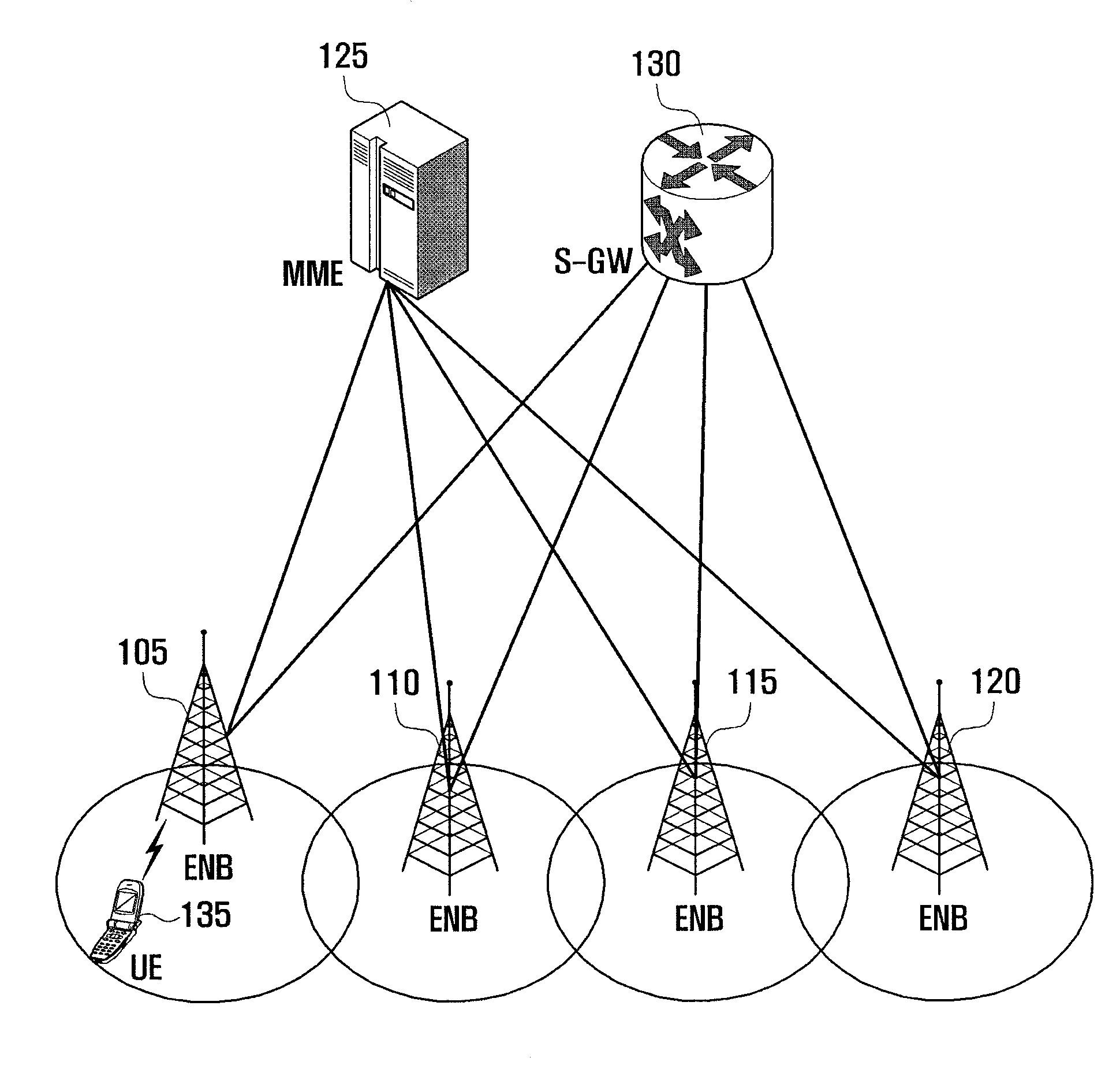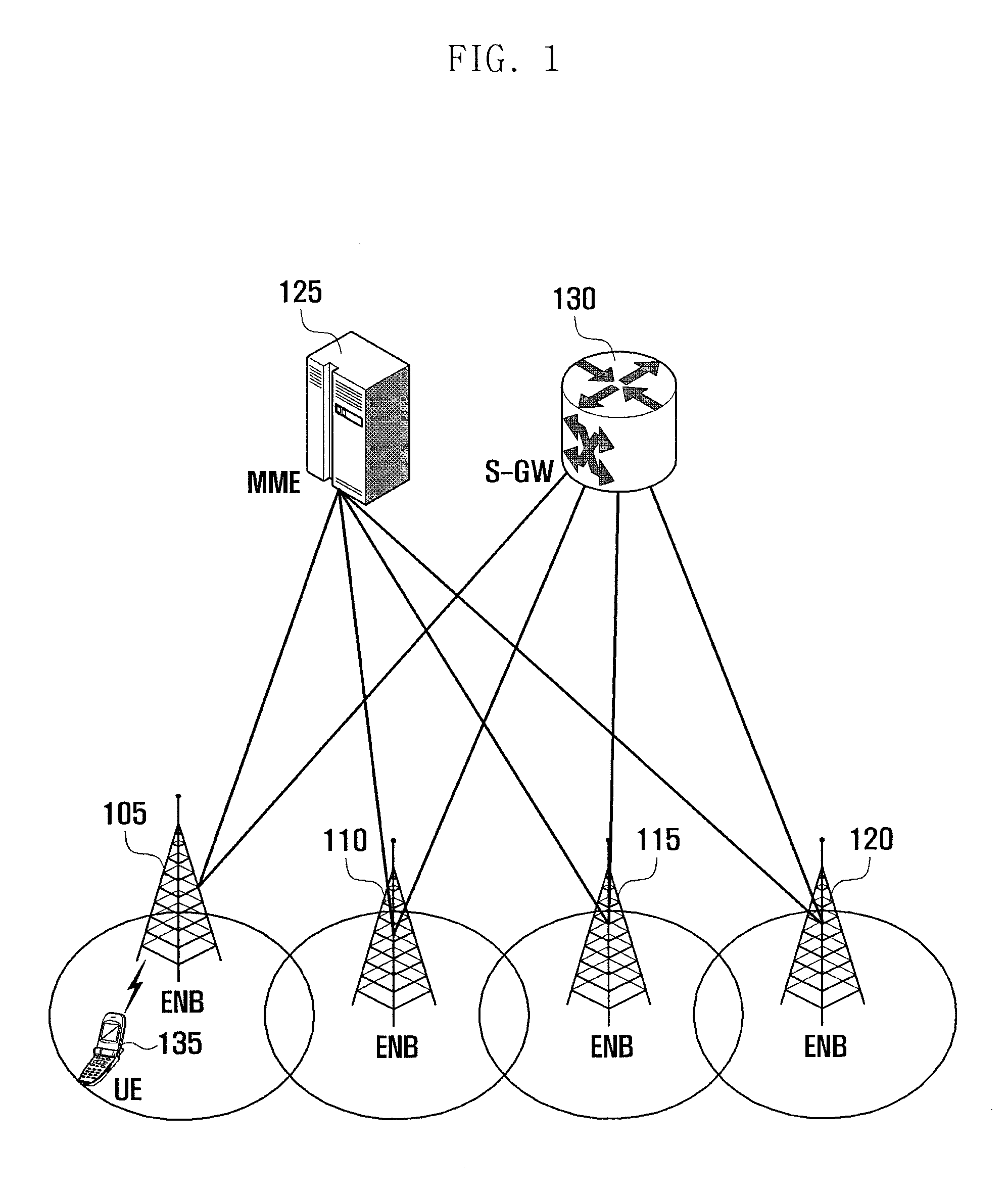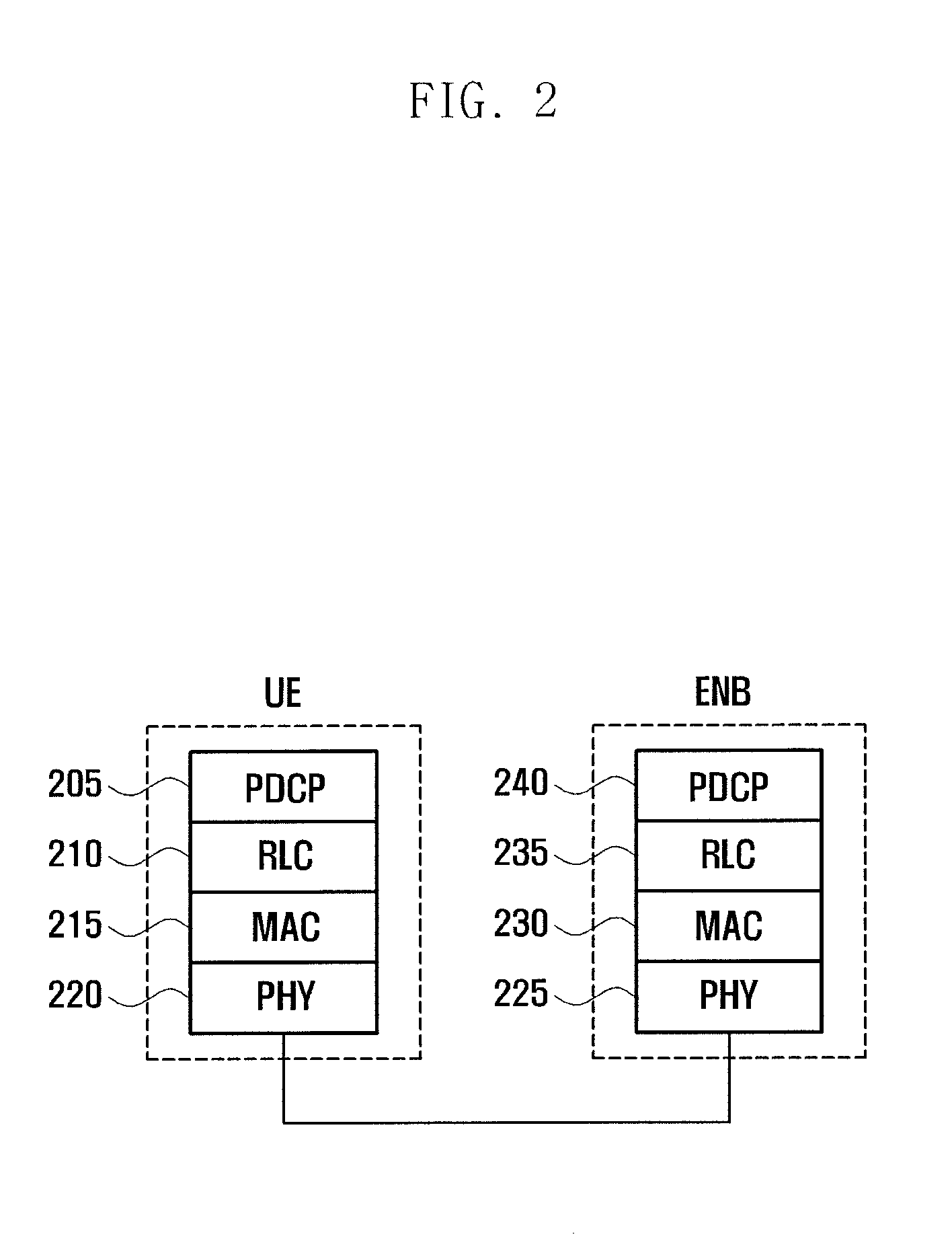Method and apparatus for managing multiple timing advance groups in mobile communication system supporting carrier aggregation
a technology of mobile communication system and advance group, applied in the field of radio communication, can solve problems such as transmission timing problems
- Summary
- Abstract
- Description
- Claims
- Application Information
AI Technical Summary
Benefits of technology
Problems solved by technology
Method used
Image
Examples
first exemplary embodiment
[0055]FIG. 6 is a signaling diagram illustrating a timing synchronization between an UE and an eNB according to an exemplary embodiment of the present invention.
[0056]Referring to FIG. 6, the eNB 605 decides to add three secondary cells (i.e. SCell 1, SCell 2, and SCell 3) to transmit data to the UE 600 at step 610. The SCell indices are set to 1, 2, and 3. The uplink timings of the SCell 1 and SCell 2 are identical with each other but differ from the uplink timing of the SCell 3. Also, the uplink timing of the PCell differs from all of the SCells. The eNB sets the TAG index of the PCell to 0. The SCell 1 and SCell 2 are configured with the TAG index 1, and the SCell 3 is configured with tag index 2. The eNB generates per-SCell configuration information. At this time, only the SCell 1 and SCell 3 are configured with respective TAG indices while the SCell 2 is not configured with any TAG index. The UE regards the TAG of the SCell 2 as being identical to the SCell 1. In order to follo...
second exemplary embodiment
[0087]As described above, when transmitting to the UE the SCell configuration of each secondary carrier, the TAG indices of the secondary carriers are included in the corresponding configurations of all the secondary carriers. In contrast to other exemplary embodiments of the present invention, some exemplary embodiments may be such that there is no SCell configuration having no TAG index. According to such exemplary embodiments of the present invention, however, the TAG index of the PCell is not informed explicitly but rather set to the highest value. That is, if the TAG index starts from 0, then the TAG index of the PTAG to which the PCell (i.e. the primary carrier) belongs is set to 0. FIG. 6 illustrates examples of the contrasting exemplary embodiments of the present invention. For example, at steps 615 and 625 of FIG. 6, the TAG index denoted with ‘2nd embodiment’ corresponds to an exemplary embodiment of the present invention in which the TAG index of the PCell is not informed...
PUM
 Login to View More
Login to View More Abstract
Description
Claims
Application Information
 Login to View More
Login to View More - R&D
- Intellectual Property
- Life Sciences
- Materials
- Tech Scout
- Unparalleled Data Quality
- Higher Quality Content
- 60% Fewer Hallucinations
Browse by: Latest US Patents, China's latest patents, Technical Efficacy Thesaurus, Application Domain, Technology Topic, Popular Technical Reports.
© 2025 PatSnap. All rights reserved.Legal|Privacy policy|Modern Slavery Act Transparency Statement|Sitemap|About US| Contact US: help@patsnap.com



